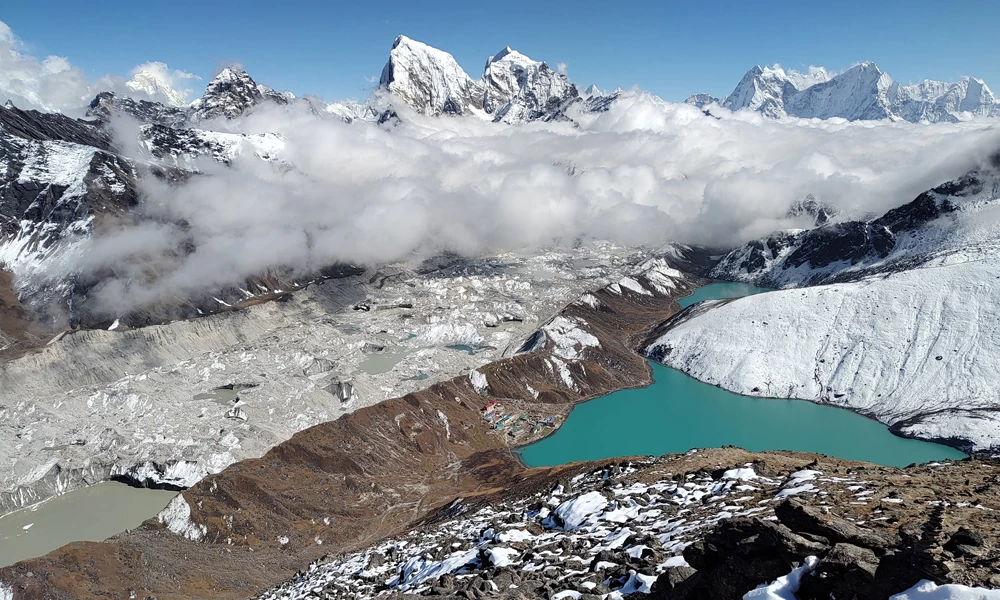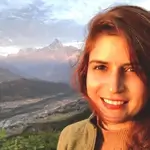Everest Easy View Trek is perfect for luxury tours because, in this trek, tourists can see the great view of Mount Everest without having to do warm trekking for EBC. This short but extremely entertaining and fulfilling trek allows one to appreciate the astonishing views of Mount Everest and adjacent mountains in the Khumbu region. The trek gains its highest point of 3,870 meters at Tengboche, which affords one of the finest views in the region. During the trek, you will pass through scenic Sherpa settlements, rhododendron and bamboo forests, and centuries-old monasteries amidst the backdrop of the mighty Himalayas.
In addition to the actual trekking, this program will visit a World Heritage Site in Kathmandu, making it more than just a trekking adventure. The Everest Easy View Trek is ideal for those who can't spend much time in the mountains but still want to see the highest part of the world. It delivers a glance into the beauty of the Everest region, making it attainable to people of all ages and health conditions. This is one of the most enchanting treks in Nepal, suitable for both first-time visitors and experienced trekkers.
What is so special about the Everest Easy View Trek?
The Everest Easy View Trek, therefore, can be said to be a fascinating trip designed for individuals who want to explore the nature of the Everest region but are not in a physical condition to undertake a long and strenuous trek. The design of this trek combines the adrenaline rush of climbing the world's highest mountains with the comfort of traveling and sightseeing at a slower pace, with the opportunity to visit other interesting places along the way. What makes it special is that it allows you to get very close to giant mountains like Everest, Ama Dablam, or Lhotse, but at the same time, it is not very physically demanding for ordinary people of any age or physical state. The maximum elevation on the trek is 3,870 at Tengboche, which is famous for the breathtaking views of mountains and the century-old monastery, which gives the passionate trekker a very spiritual feeling.
The Everest Easy View Trek also offers the opportunity to experience the rich culture of the Nepalese people. Trekkers get the opportunity to experience the colorful Sherpa culture, as well as areas like Namche Bazaar, which is famous for being the largest trading hub of the Everest region. The trek passes through the lush vegetation of the Sagarmatha National Park, a UNESCO site, contributing to its overall beauty. The inclusion of a helipad to Lukla and the opportunity to spend a night at the Everest View Hotel, renowned for its breathtaking views, are not mere extras but an integral part of the journey that seamlessly blends luxury, natural beauty, and cultural sights and sounds.
Outline Itinerary for 9 day Everest Easy View Trek
Day | Activity | Time | Altitude | Additional Information |
01 | Arrival in Kathmandu. Transfer to hotel. Evening trek briefing | Full day | 1300m | Rest and acclimatize to Kathmandu. Enjoy a traditional Nepali cultural dinner. |
02 | Kathmandu Sightseeing: | Full day | 1300m | Explore UNESCO World Heritage Sites and purchase necessary gear. |
03 | Domestic flight to Lukla. Trek to Phakding. | 45-min flight, 4-hour trek | 2880m to 2640m | Scenic flight to Lukla. Begin trek with a gentle hike to Phakding. |
04 | Trek from Phakding to Namche Bazaar. | 5-6 hours | 3445m | Cross suspension bridges and enter Sagarmatha National Park. |
05 | Acclimatization Day: Hike to Hotel Everest View. | 5-6 hours | 3962m | Enjoy panoramic views of Everest and other mountains. |
06 | Trek from Hotel Everest View to Monjo. | 5 hours | 2840m | Descend through forests and Sherpa villages. Overnight stay in Monjo. |
07 | Trek from Monjo to Lukla. | 5-6 hours | 2880m | Retrace the trail back to Lukla. |
08 | Domestic flight from Lukla to Kathmandu. | 35 minutes | 1300m | Scenic flight back to Kathmandu |
09 | Departure Transfer. | - | End of the trip |
Permits for Everest View Trek
The Everest View Trek requires specific permits to enter the Everest region, which is part of the Sagarmatha National Park. Below is a detailed explanation of the permits needed:
1. Sagarmatha National Park Entry Permit
This permit is mandatory for entering the Sagarmatha National Park, which covers the Everest region. The cost will be NPR 3,000 (approximately USD 25) for foreigners. And NPR 1,500 (approximately USD 12) for SAARC nationals.
Where to Obtain:
At the Nepal Tourism Board office in Kathmandu.
Documents Required: Passport copy and two passport-sized photos.
2. Khumbu Pasang Lhamu Rural Municipality Entrance Permit
This permit replaced the TIMS (Trekkers' Information Management System) card for the Everest region. It is required for trekking in the Khumbu area. The cost will be NPR 2,000 (approximately USD 17) for all trekkers.
Where to Obtain:
At the checkpoint in Lukla or Monjo.
Documents Required: Passport copy and two passport-sized photos.
A Typical Day on the Everest View Trek
The Short Everest View Easy Trek is designed for those who want to experience the beauty of the Everest region without undertaking a strenuous or lengthy trek. Typical activities during this trek include scenic flights from Kathmandu to Lukla, which offer breathtaking views of the Himalayas. Once in Lukla, you will do a gentle hike through picturesque Sherpa villages, such as Phakding and Namche Bazaar.
You can immerse yourself in local culture and hospitality. The trail passes through lush forests, suspension bridges, and serene rivers, providing ample opportunities for photography and nature appreciation. A highlight of the trek is the visit to the Everest View Hotel in Syangboche. You can enjoy panoramic views of Mount Everest, Lhotse, and Ama Dablam.
The journey also includes exploring the vibrant markets and monasteries in Namche Bazaar, learning about Sherpa traditions, and acclimatizing to the altitude. This trek is perfect for those seeking a shorter, less demanding adventure while still experiencing the majesty of the Everest region.
Is a 9-day Everest View Trekking Suitable for You?
The 9-day Everest View Trek is an ideal choice for those seeking a shorter, less strenuous trekking experience while still enjoying the breathtaking beauty of the Everest region. This trek is particularly suitable for beginners, families, or those with limited time.
This trek avoids the high altitudes and challenging trails of longer treks like the Gokyo Chola Pass Trek with EBC. The itinerary includes scenic flights, gentle hikes through Sherpa villages, and stunning views of iconic peaks like Everest, Lhotse, and Ama Dablam. With proper acclimatization and a moderate level of fitness, you can comfortably complete this trek.
However, if you have limited trekking experience or health concerns, it is advisable to consult a doctor and consider hiring a guide or porter for added support. Overall, this trek offers a perfect balance of adventure, culture, and natural beauty, making it a great option for those looking to experience the magic of the Himalayas without committing to a more demanding journey.
How to prepare for the Everest View 9 Days Trekking?
Preparing for the 9-day Everest View Trek requires physical, logistical, and mental readiness to ensure a safe and enjoyable experience. Here's how you can prepare effectively:
Focus on activities like hiking, jogging, cycling, or swimming to build stamina.
Aim for at least 30–60 minutes of cardio exercises 4-5 times a week.
Incorporate squats, lunges, and step-ups to strengthen your legs for uphill and downhill walking.
Practice trekking with a backpack to simulate the actual trek. Gradually increase the weight and duration of your practice hikes.
Though the trek does not reach extremely high altitudes, acclimatization is key.
Stay hydrated and avoid overexertion during the trek.
Bring moisture-wicking base layers, insulating mid-layers, and waterproof outer layers. Pack comfortable trekking pants, thermal socks, gloves, and a warm hat.
Invest in well-fitted trekking boots and break them in before the trek. Pack comfortable sandals for evenings.
Include medications for common ailments, blister care, and altitude sickness (consult a doctor for acetazolamide).
Hiring a guide ensures a safer trek and enriches your cultural experience.
Book your Lukla flights in advance to avoid last-minute issues.







